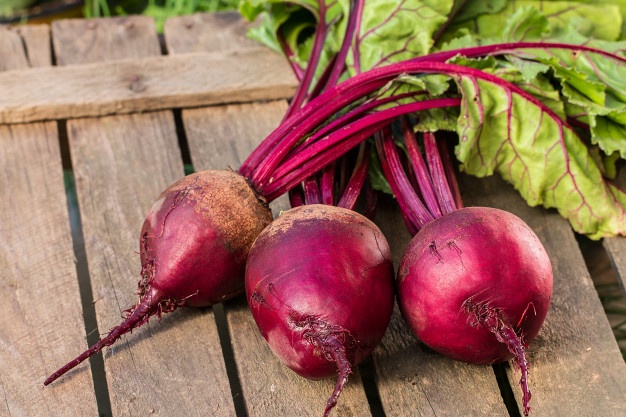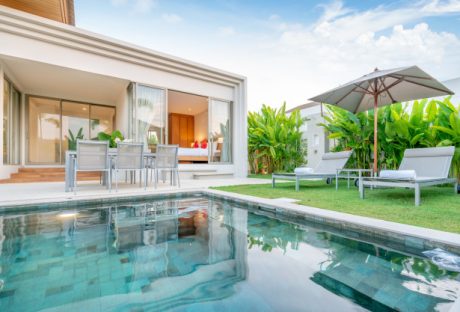There is nothing that beats the taste of a freshly picked tomato from your garden compared to produce that is bought from a grocery store. Growing your vegetables in the comfort of your garden is one of the activities that balance indulgence and practicality. Aside from the convenience, growing your vegetables allows you to get more nutrition as well.
Vegetables start to lose their nutrients the moment they are harvested, and their quality decreases as sugars will turn into starches. Hence, if you are aiming for veggies with the best nutrition, try growing your own. That being said, here are a few of the best vegetables that are best to grow in your garden.
Rhubarb

Rhubarb is a vegetable that is renowned for its red firm stalk and sour taste. Like celery, it is edible, especially when you add a lot of sugar to it. Although it is technically a vegetable, it is commonly used in sweet and tart recipes. There are also different types of rhubarb that you may choose to grow for personal consumption.
Rhubarb best grows in well-draining and fertile soil that is abundant in organic matter. Constant moisture is necessary, but it doesn’t like too much wetness. These plants spread out; therefore, it should be placed 3-4 feet apart from each other when planting. It does not contain a lot of essential nutrients, but it is an excellent source of vitamin K1.
Tomatoes

Fresh, homegrown tomatoes are one of the few reasons many gardeners decide to get into gardening. Nothing could match eating a perfectly ripe tomato from your backyard. It is also unbelievably good for us, with it being rich in vitamins A, B6, and C, niacin, fiber, potassium, magnesium, iron, and the antioxidant lycopene.
Tomatoes are ideal for growers with small balconies or gardens as they do not require too much space to grow. They typically take 12 weeks until they can be harvested. Aside from this very speedy growing period, its plant can produce tomatoes daily for up to six years. It would be best to watch out for tomato horns as these large caterpillars can be a problem.
Broccoli

Broccoli is a vegetable that belongs to the cole crop family along with kohlrabi, kale, Brussels sprouts, cabbage, and cauliflower. It grows best during the cold season of the year. It is known to be high in vitamins A, B6, C, magnesium, calcium, and iron. As a matter of fact, a cup of raw broccoli gives 130 percent of a person’s regular vitamin C requirement.
Broccoli is best to grow during early spring and fall and can be set in an in-ground garden or container. Place these plants 18 inches apart from each other. You may also want to get a location that has fertile soil and has easy access to water. A moisturized soil is also best for broccoli, therefore water it for 1 to 1.5 inches every week.
Red Bell Pepper

Most of the gardeners would agree that every time they planned their vegetable garden, one of the plants they want to include is a bell pepper. Who would not? Peppers are great in all types of dishes, cooked and raw. Red bell peppers are high in vitamins A, B6, C, riboflavin, and potassium. You may want to take note that a cup of it contains 93% of the required vitamin A and 317% of vitamin C daily allowance.
Although growing this vegetable is not as problematic compared to other plants, temperature plays an important role. They may be easy to grow, but its plant care, especially in the early stages, is crucial. Bell peppers flourish in warm seasons, and it is vital to be sure that the chance of frost in your area is long gone since frost might hinder pepper growth.
Beets

Beets are one of the vegetables that can grow quickly and do not require you to wait long before you can harvest them. Apart from its roots, you can also eat its green tops, making it a dual-purpose crop. Young beets can be added to a salad, while the larger ones can be sauteed as a side dish. Beetroots are very rich in vitamin C, potassium, and iron.
Beets are the best option for northern gardeners as they can survive near-freezing temperatures and frost. For beginners, it is best to look for bolt-resistant, especially in warm weather. You can also start harvesting them once they are about the size of a tennis or golf ball as larger roots may be woody and tough.
Takeaway
Growing and maintaining your vegetable garden may seem overwhelming to some people, but it is easier than it sounds. Even if you only have a small garden, you may still be able to grow the vegetables we provided in this article. Additional guides can also be found all over the internet.
Read Also:






















